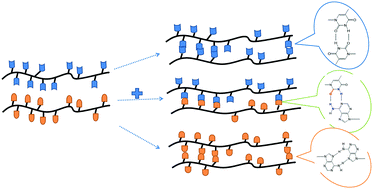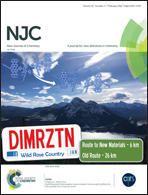Preparation of supramolecular silicone elastomers via homo- and hetero-assembly†
Abstract
Supramolecular silicone elastomers were first prepared via the self-assembly of nucleobase-functionalized polysiloxanes which were synthesized by a catalyst-free aza-Michael reaction. The nucleobases adenine (A) and thymine (T) form A–A, T–T, and A–T hydrogen bonding via base pair recognition. The mechanical properties of the elastomers improved a lot after the process and can be controlled by adjusting the A and/or T content. These elastomers emit blue light under UV light irradiation because of the unconventional Si–N coordination bond and they exhibit ultra-low temperature (−114.53 °C) resistance because the normal crystallization disappears at −60 °C.



 Please wait while we load your content...
Please wait while we load your content...